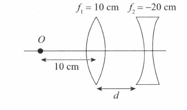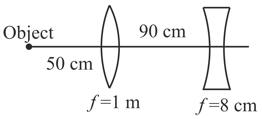EASY
Earn 100
What are the parts of binoculars?
Important Questions on Human Eye and Optical Instruments
MEDIUM
EASY
MEDIUM
EASY
EASY
EASY
EASY
HARD
HARD
EASY
MEDIUM
MEDIUM
MEDIUM
MEDIUM
EASY
The value of distance so that final image is formed on the object itself is ___ .

MEDIUM
Represent the union of two sets by Venn diagram for each of the following.
is a prime number between and
is an odd number between and
EASY
HARD

Find linear magnification in the given diagram.
EASY
MEDIUM

